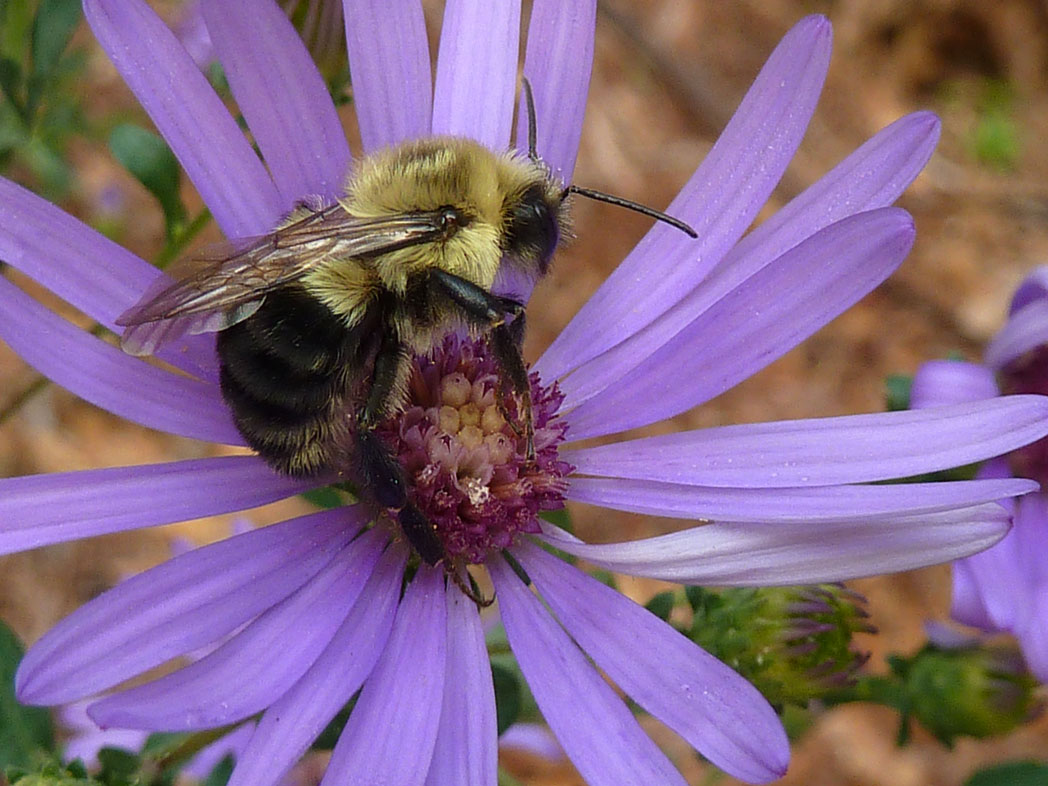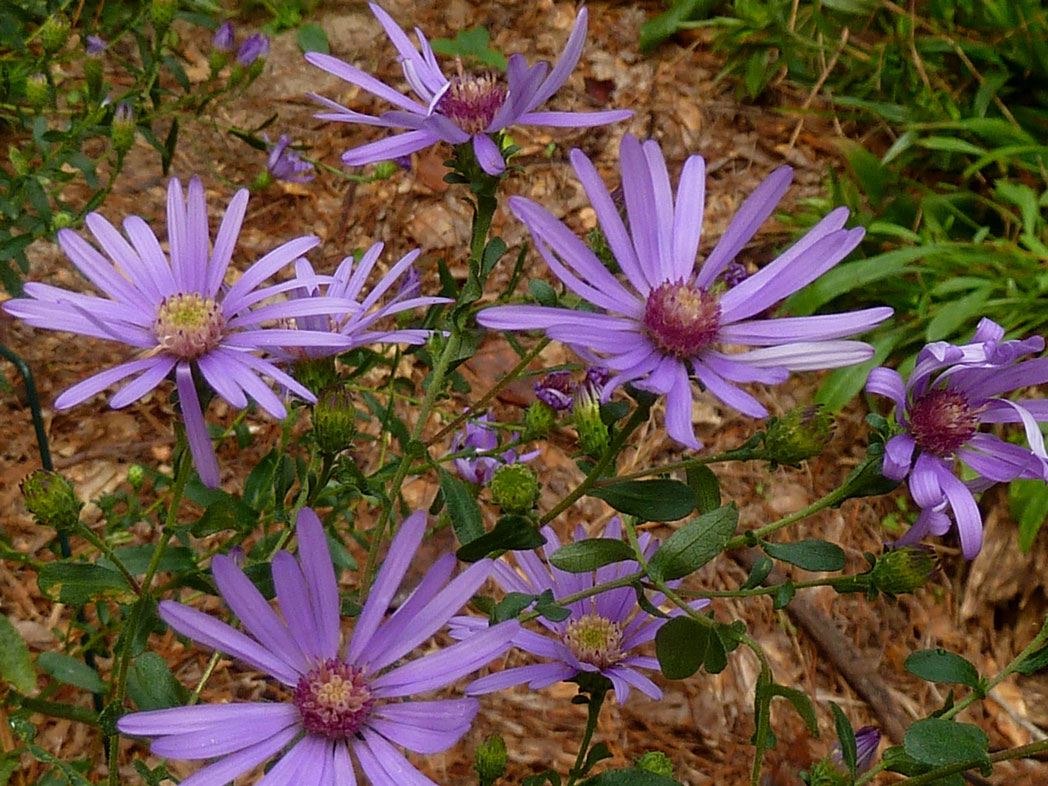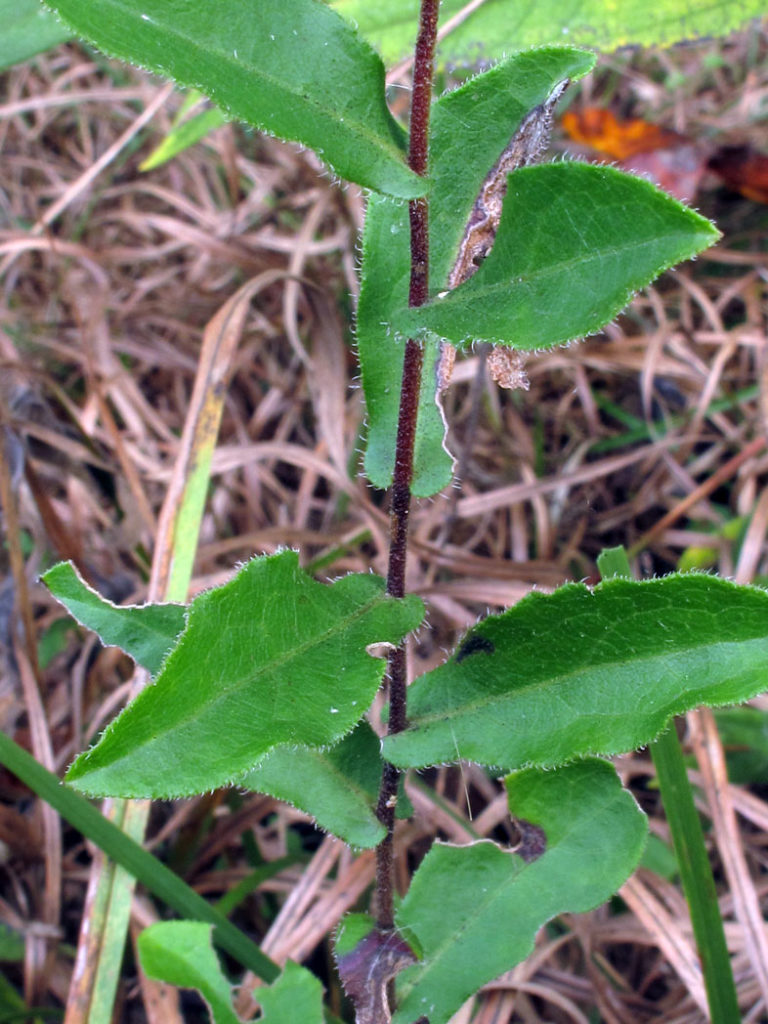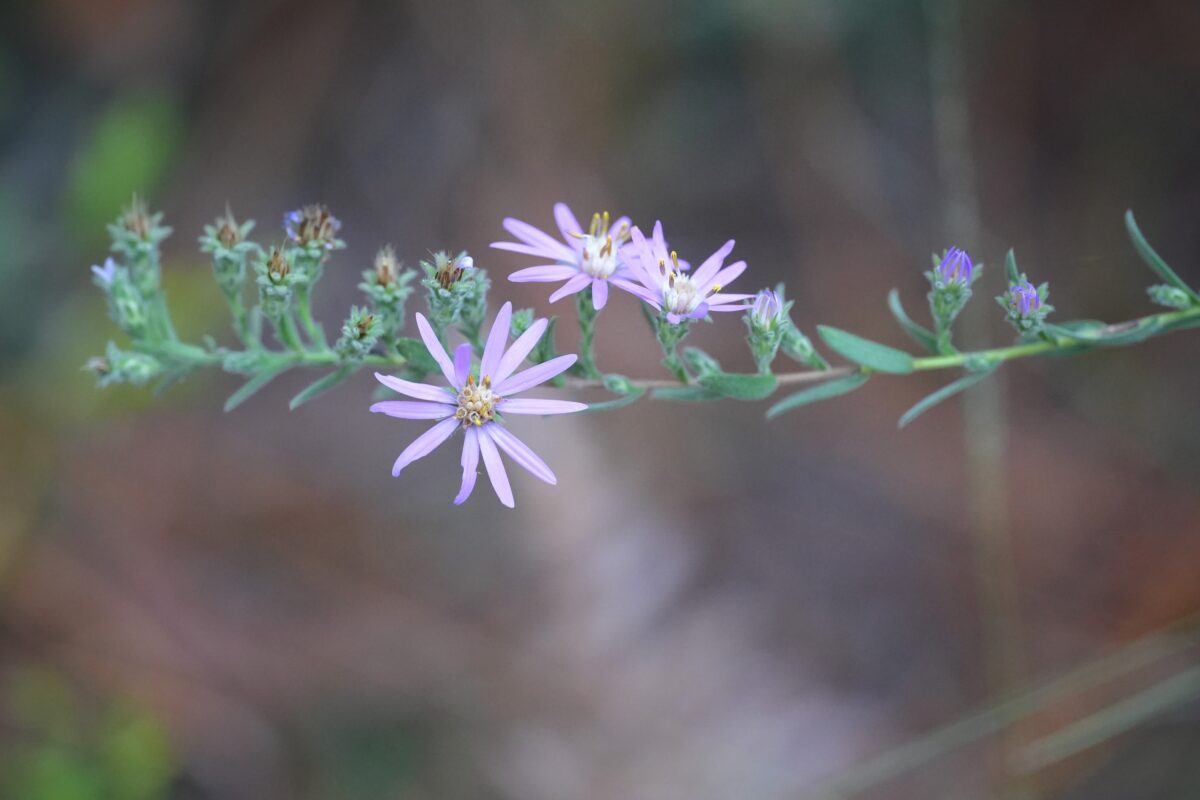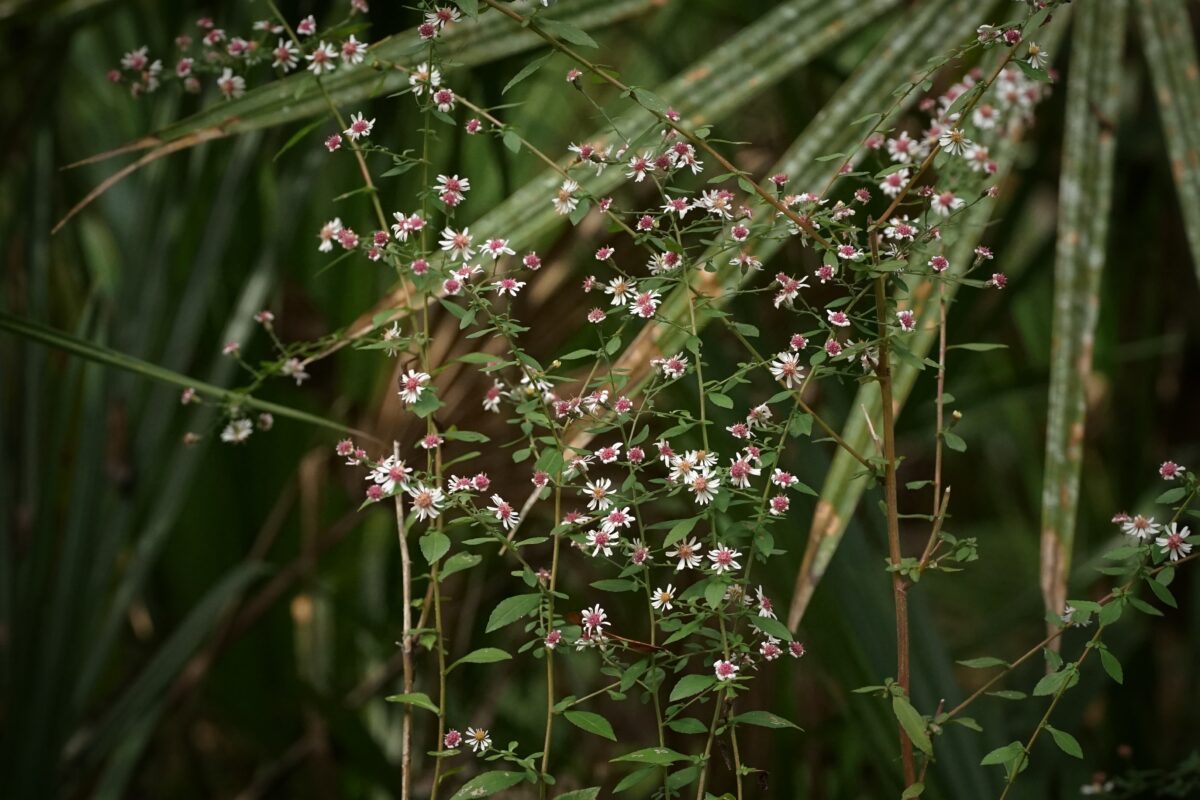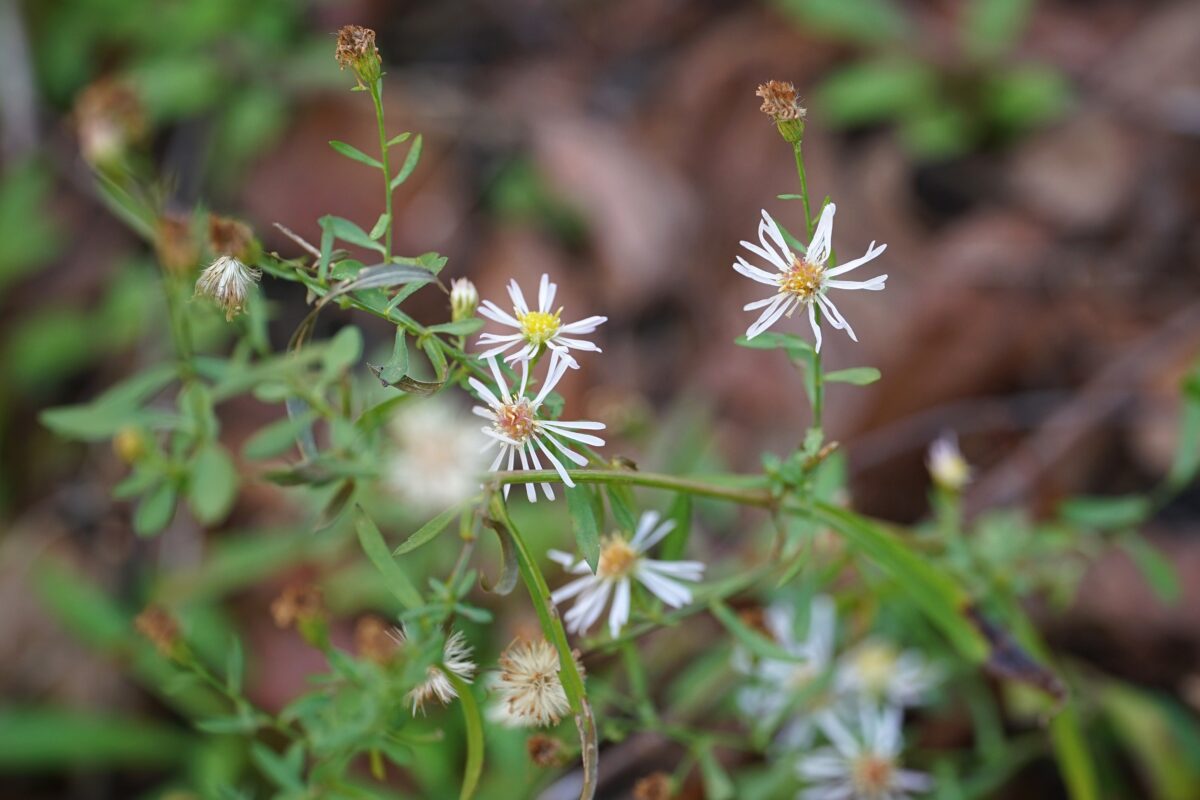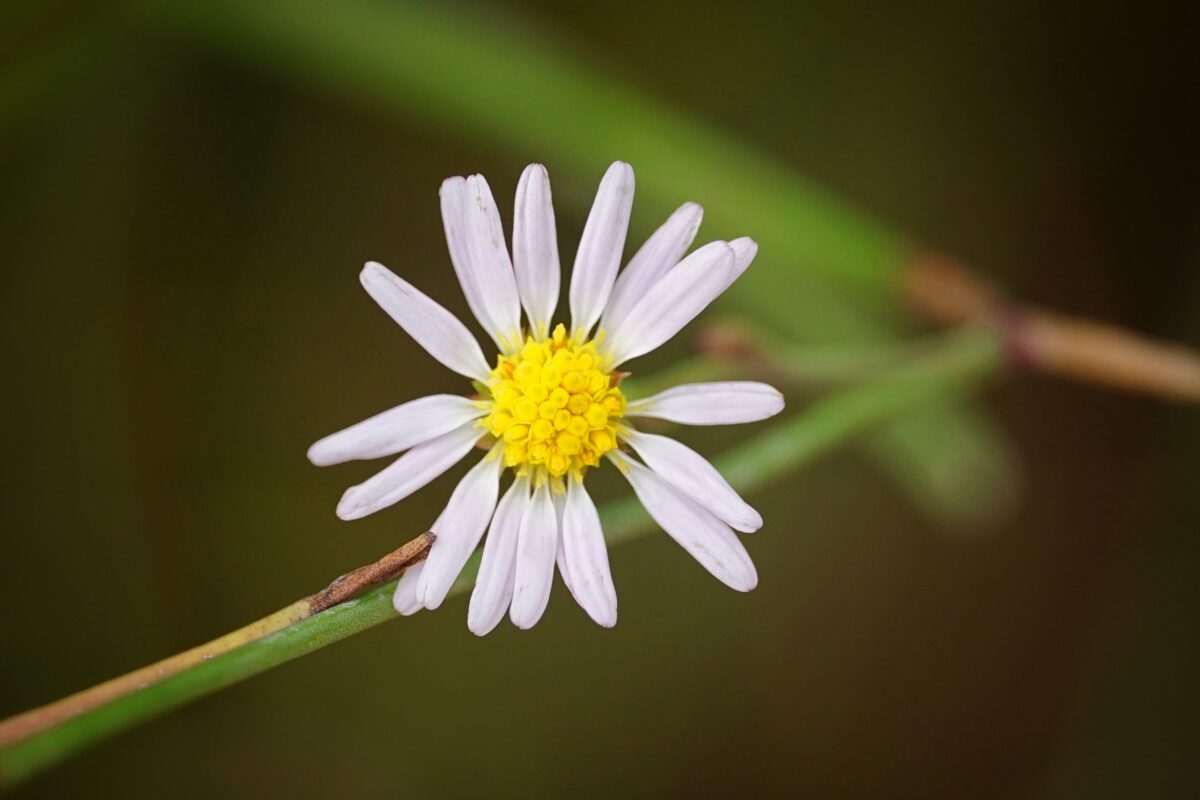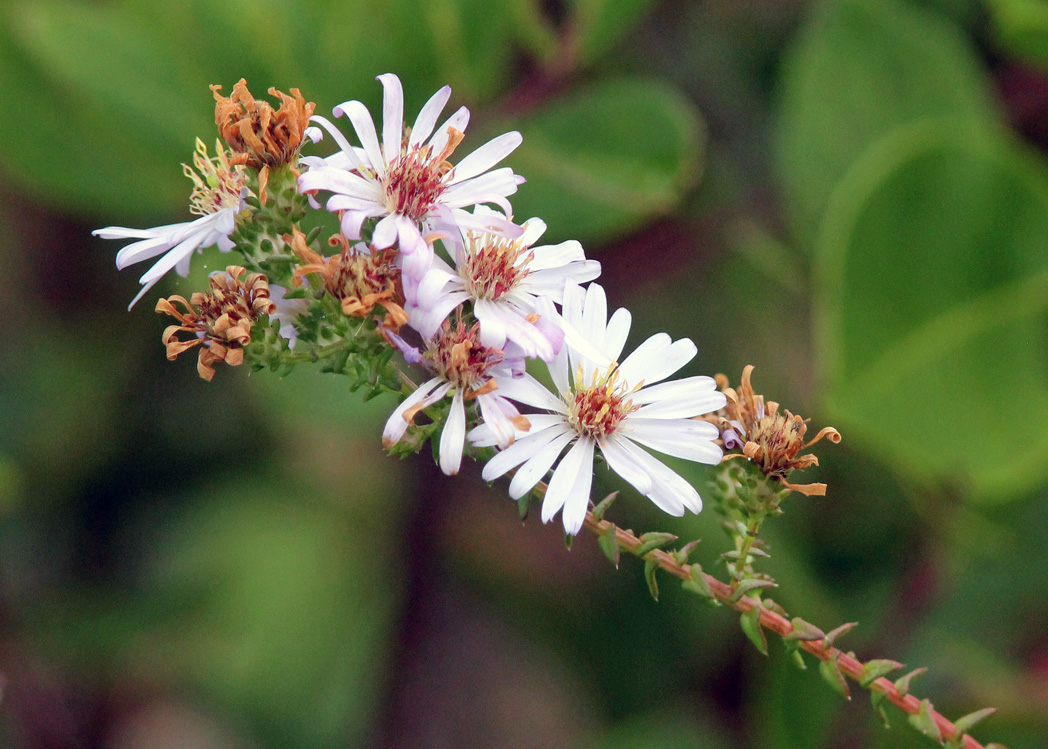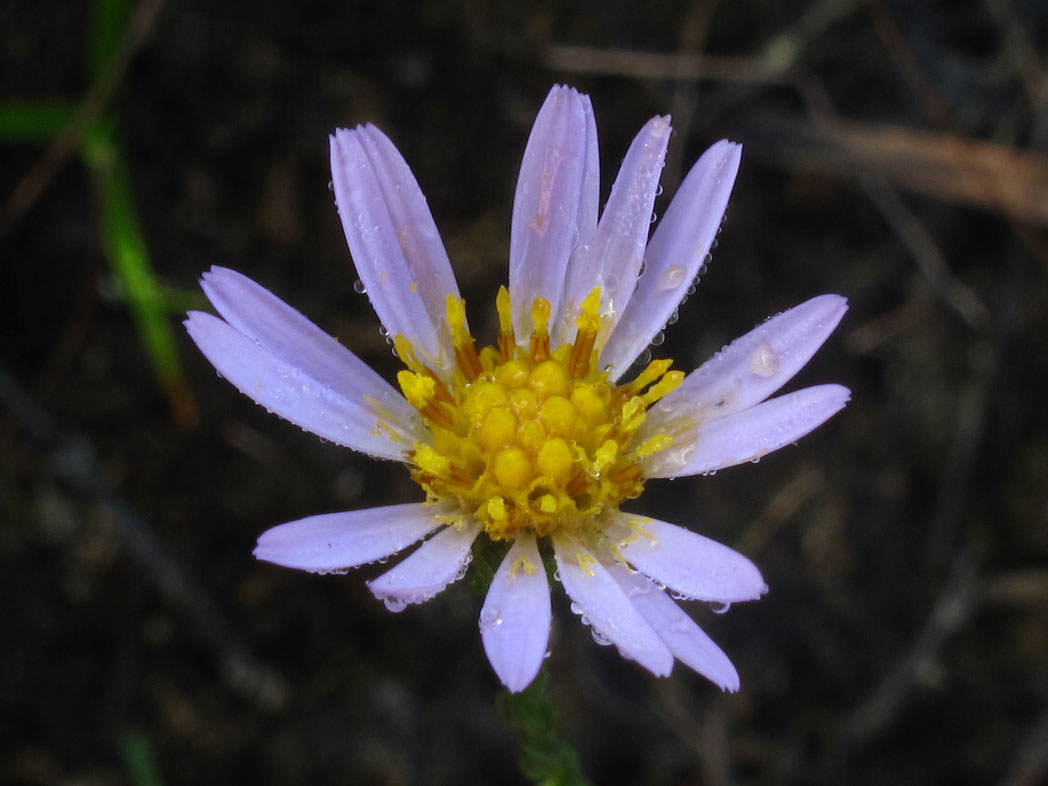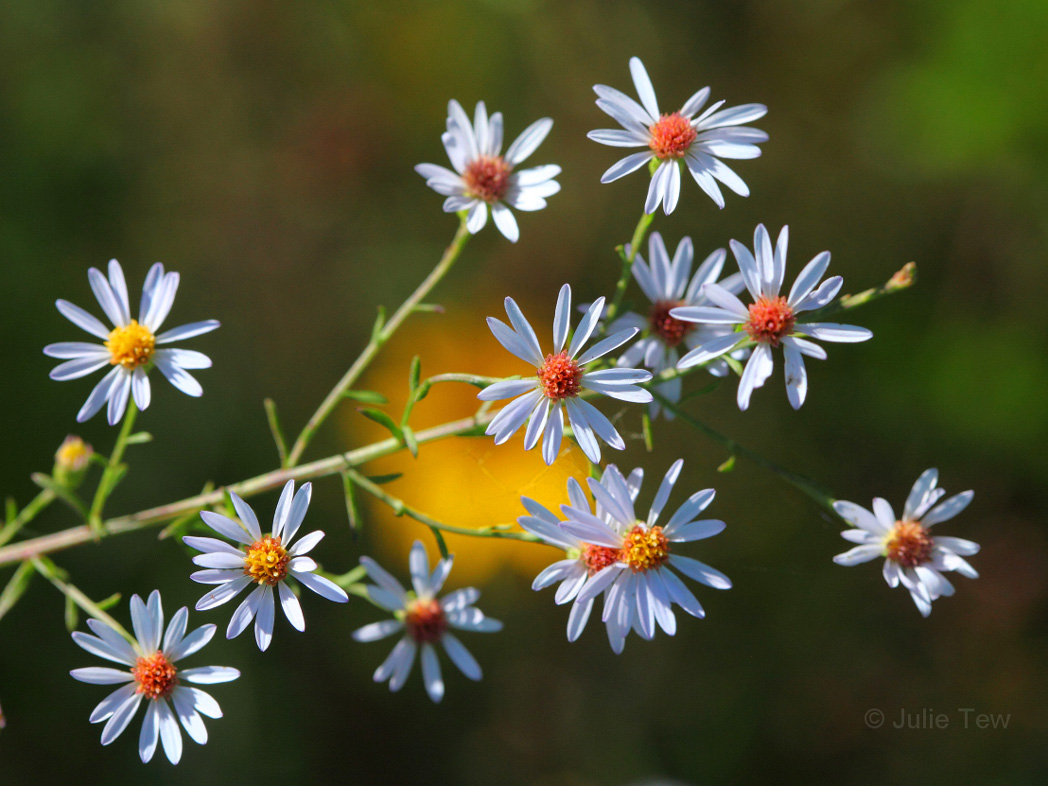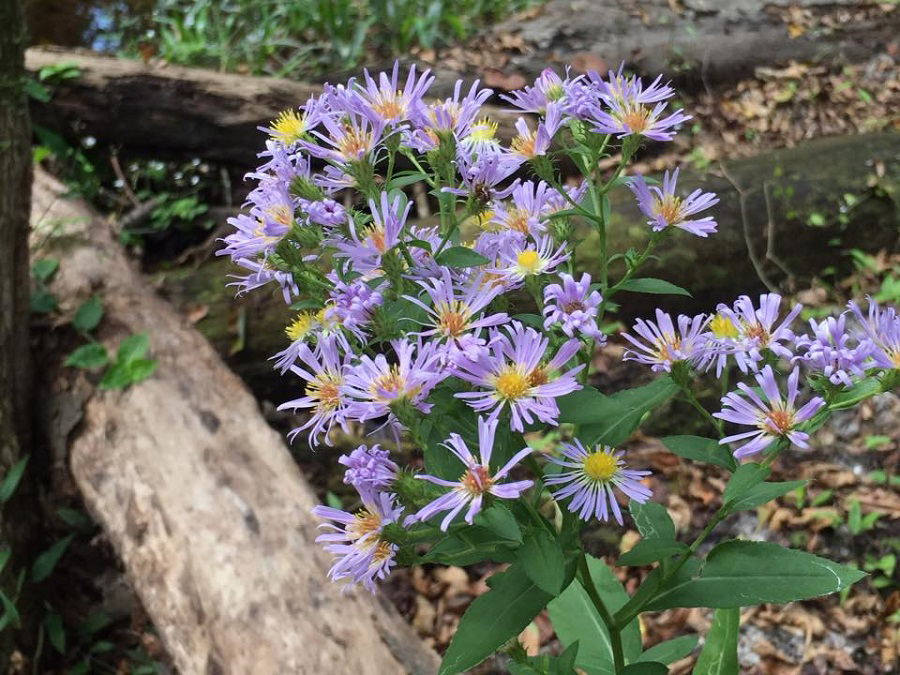Georgia aster
Pictured above: Bees are attracted to the deep purple flowers of Georgia aster (Symphyotrichum georgianum). Photo by Eleanor Dietrich. Click on terms for botanical definitions. View post as a PDF
Georgia aster’s flowers are distinguishable from other Symphyotrichum species by their relatively large size (up to 2 inches in diameter) and deep violet-colored ray petals. They bloom in October and November and are a magnet for bees and butterflies. In Florida, the plant occurs only in Leon County and is a state-listed threatened species. It is also found in a few counties in Alabama, Georgia and North and South Carolina. Habitat loss and fire suppression in its native pineland and savanna ecosystems have contributed significantly to its decline.
Georgia aster’s flowers are composed of up to two dozen bluish-purple ray florets surrounding a dense center of white to lavender disk florets that turn reddish-purple or tan as they mature. Flowerheads are cupped in a whorl of hairy, linear– to lance-shaped bracts. The plant’s leaves are dark green, oblong to lanceolate and thick with a rough surface. They may be sessile or clasping. Leaf margins are entire and tend to be revolute. Basal leaves are spatulate to obovate with entire or serrated margins. Stems are woody. Fruits are specialized achenes called cypselae.
Members of the Symphyotrichum genus were once classified in the genus Aster, which contained over 600 species. All have since been reclassified into 10 different genera. The genus name Symphyotrichum is from the Greek sýmphysis, meaning “growing together,” and thríx, or “hair.” It refers to a basal ring of hairs or bristles (pappi) thought to occur on New England aster (Aster novi-belgii, now Symphyotrichum novi-belgii); however, this characteristic is absent in most modern Symphyotrichum species.
Family: Asteraceae (Aster, composite or daisy family)
Native range: Leon County
To see where natural populations of Georgia aster have been vouchered in Florida, visit florida.plantatlas.usf.edu.
Lifespan: Perennial
Soil: Dry, well-drained, acidic sandy or clay soils
Exposure: Full sun to minimal shade
Growth habit: 1–3′ tall and spreading
Propagation: Division
Florida regions of landscape suitability: North
Garden tips: Although rare in nature, Georgia aster is propagated by several native nurseries in Florida. It is relatively easy to grow in the right conditions and adds a stunning pop of fall color to a mixed wildflower garden. The plant can be lanky, but occasional pruning during the growing season (before flowering) will encourage a denser form and more flowers. It is colonial and spreads by underground rhizomes. The plant is deciduous and dies back in winter.
Georgia aster is occasionally available from nurseries that specialize in Florida native plants. Visit www.PlantRealFlorida.org to find a nursery in your area.
Learn more about Georgia aster from the Institute for Regional Conservation.
For information on other Symphyotrichum species, see these resources:

